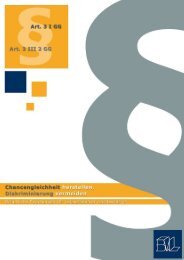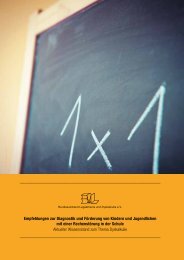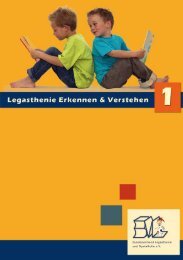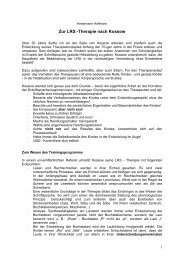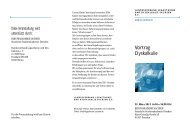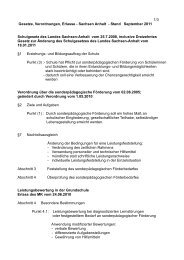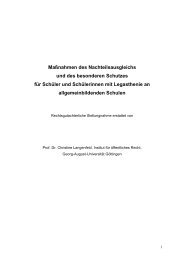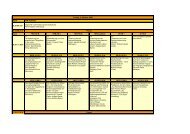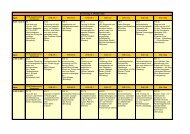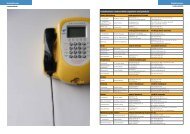Abstractband zum 16. Kongress des Bundesverbandes Legasthenie
Abstractband zum 16. Kongress des Bundesverbandes Legasthenie
Abstractband zum 16. Kongress des Bundesverbandes Legasthenie
Sie wollen auch ein ePaper? Erhöhen Sie die Reichweite Ihrer Titel.
YUMPU macht aus Druck-PDFs automatisch weboptimierte ePaper, die Google liebt.
<strong>16.</strong> <strong>Kongress</strong> <strong>des</strong> Bun<strong>des</strong>verban<strong>des</strong> <strong>Legasthenie</strong> <strong>Abstractband</strong><br />
Jacob CP, Romanos J, Dempfle A, Heine M, Windemuth-Kieselbach C, Kruse A, Reif A,<br />
Walitza S, Romanos M, Strobel A, Brocke B, Schafer H, Schmidtke A, Boning J, Lesch<br />
KP (2007b) Co-morbidity of adult attention-deficit/hyperactivity disorder with focus on<br />
personality traits and related disorders in a tertiary referral center. Eur Arch Psychiatry<br />
Clin Neurosci 257: 309-1<br />
Korrespondenzautor:<br />
Christian Jacob<br />
jacob_c@klinik.uni-wuerzburg.de<br />
0931 201 77810<br />
How the brain works during reading<br />
Arthur Jacobs<br />
Freie Universität Berlin, Arbeitsbereich Allgemeine und Neurokognitive Psychologie, Berlin, Deutschland<br />
Mankind exists for 2-3 million years, but only about 6 thousand years ago men started<br />
to write and read, leaving little time for the human brain to develop neuronal structures<br />
specialized for processing script. Using modern neuroimaging techniques, however, reading-specific<br />
activities can be detected in all four lobes of the brain and the cerebellum.<br />
Starting about 1/10 of a second after our gaze has fixated a word during reading, the occipital<br />
lobes already have developed a sort of typeface representation. Another 1/10 of a<br />
second later, this „orthographic code“ is coupled with corresponding phonological co<strong>des</strong><br />
in the left temporal lobe. After about ¼ of a second semantic associations are computed<br />
involving the left frontal lobe and the so-called lexical access provi<strong>des</strong> conscious information<br />
about all kinds of word properties. Using computer models one can analyze and<br />
simulate this magical moment of lexical access, the basic process underlying the reading<br />
skill. The factors that influence its speed and quality will be discussed in this talk in the<br />
light of new methods and models used in the study of reading and reading disorders.<br />
Korrespondenzautor:<br />
Arthur Jacobs<br />
ajacobs@zedat.fu-berlin.de<br />
030 838 51277<br />
030 838 65620<br />
Diagnostik der Dyskalkulie in der Praxis mit dem RZD 2-6<br />
Claus Jacobs<br />
Psychologische Kinderambulanz der Universität Bremen, Bremen, Deutschland<br />
Von Rechenstörungen sind ca. 6% der Kinder betroffen, also etwa ebensoviel wie von<br />
der Lese/Rechtschreibstörung. In den letzten Jahren haben sich die Forschungsbemühungen<br />
zur Zahlenverarbeitung und Rechenfertigkeiten deutlich vervielfacht.<br />
In der Praxis setzt die Diagnostik und Therapie von Rechenstörungen umfassende<br />
59



